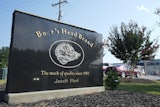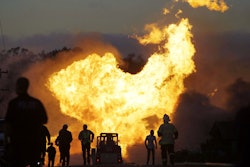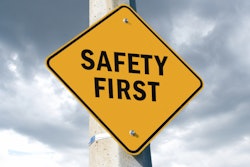At May’s Food Safety Summit in Illinois, Food Manufacturing had the opportunity to visit the Lizard Monitoring booth and chat with CEO Rupert Prince. FM was able to correspond with Prince after the show on the topic of temperature monitoring in the food and beverage industry.
Here’s what he had to say in a Food Manufacturing Q&A:
Q. Describe the important role temperature monitoring plays as it relates to food safety?
A. Maintaining proper temperature for food in the distribution and retail chain is critical for food safety. We see three key areas where this next generation technology is transforming the food safety landscape. First, is simple loss prevention: If you are alerted real-time to product being out of compliance, then you have time to react to it and protect valuable inventory. Second, is reduced cost and increased accuracy of data collection. Third, is really about 100 percent compliance and audit trail. For example, our customers enjoy having each temperature event responded to by their associates, and details on the exact product exposure. All of this really adds up to confidence that your product is safe, your customers are safe, and your brand is protected.
Q. In what kind of applications is remote temperature monitoring most commonly used in the food and beverage industry?
A. The availability of low cost sensors, coupled with cloud computing, is enabling organizations to deploy the remote monitoring solutions throughout the food distribution channel. Specifically in processing plants, trucking, warehousing and retails outlets. These systems allow organizations, both large and small, to automate the compliance workflow, view trends in given locations or equipment, and have instantaneous access to temperature data in their cold chain. We believe companies that have this data visibility will have a distinct food safety advantage in the marketplace.
Q. How do wireless monitoring systems help food and beverage companies achieve and efficient route to Food Safety Modernization Act and compliance with other food safety regulations?
A. We see a lot of focus in the marketplace on compliance with FSMA and the EU's Regulation 178 / 2002. To comply with these pieces of legislation requires frequent monitoring of product temperature from "farm-to-fork." The Lizard system enables the placement of sensors anyplace there is food storage — in transit on trucks, in warehouses, on grocery shelves and refrigerators of franchised chains. The data is collected and processed by powerful computers in the cloud, and important alerts, trends and insights are delivered to customer's mobile devices.
Q. How does the Lizard Monitoring system work?
A. The Lizard system utilizes three technology mega-trends to drive the automation of food safety: 1. Wireless sensor communication technology, is now a mature, low cost and powerful way to collect remote data. 2. Cloud computing and data storage resources have advanced rapidly in just the last few years, and enable the processing and synthesis of vast amounts of data into actionable tasks. 3. The ubiquitous availability of powerful smartphones and mobile devices makes real-time communication across an organization's associates possible. The Lizard system is truly wireless. The sensors are battery-powered and can be deployed in a facility in an hour or two. The installation is extremely simple, even in trucks or delivery vehicles. Once installed, the sensors form a secure, robust and redundant wireless network that communicates to servers in the cloud, and our software begins to immediately store and analyze the data. Management teams can view the health of the cold chain across an entire operation on their mobile devices or desktop computers. Detailed reports reveal long-term trends and point to areas that can be improved, while the simple-use interface allows associates to easily interact with the system resolving temperature deviations in real-time, before they become problems.






















